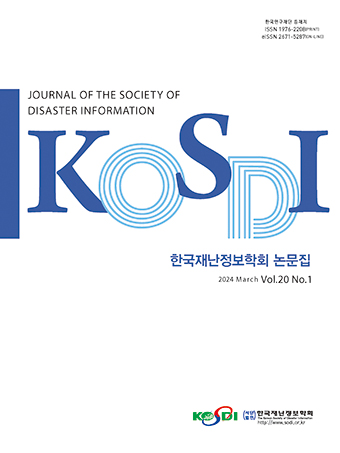Research Article
Abstract
References
Information
Purpose: In this paper adhesive-bonded cylindrical lap joints are analyzed by assuming that the adherends are elastic and the adhesive is linearly viscoelastic. Method: The distribution of the stresses in the adhensive is evaluated using the Finite Element Method. Nuverical examples for identical and different adherends bonded through a four parameter viscoelastic solid adhesive are illustrated. Results: The stress distribution in the adhesive layer with respect to time is shown. The stress distribution in the adhesive layer with respect to time is shown. The results are also shown that adherend thickness and elastic modulus give effect on the normalized stress. Conclusion: In this study, the stress distribution of the adhesive layer of the wrapped cylindrical body considering the viscoelasticity of the adhesive layer was numerically analyzed by using a four - element elastomer model.
연구목적: 본 논문에서 접착제로 접착된 원통형 랩 접합부는 피착체가 탄성이고, 접착제가 선형 점탄성이라고 가정한다. 연구방법: 피착제의 응력 분포는 유한요소법을 사용하며, 4개의 아이소파라메터 점탄성 고체 접착제를 통해 피착제에 대한 해석결과를 검증한다. 연구결과: 접착층에서의 시간에 대한 응력분포와 피착제의 두께와 탄성율이 규격화에 미치는 응력의 영향을 검토한다. 결론: 본 연구는 접착제층의 점탄성을 고려한 랩접착된 원통체의 접착제층의 응력분포에 대해서 4요소 탄성체 모델을 사용하여 수치해석을 하였다.
- Adams, R.D., Peppiatt, N.A. (2016). “Stress analysis of adhesive bonded tubular lap joints.” J. Adhes, Vol. 9, pp. 1-8. 10.1080/00218467708075095
- Jeon, I.K., Jeon, C.K. (2010). “Manufacture and Construction Technology of Polyamide Fiber Reinforced Shotcrete in Tunnel.” Journal of the Korea Institute for Structural Maintenance and Inspection, Vol. 14, No. 6, pp. 41-45.
- Kim, Y.G., Kim, S.C., Kim, M.H. (2012). “A Study on the Dynamic Properties of Cement Mortar with Recycled PET Fiber.” Journal of the Korea Institute of Building Construction, Vol. 2, No. 4, pp. 113-122. 10.5345/JKIC.2002.2.4.113
- KS F 2566:2000 (2000). Test Method for Flexural Toughness of Steel Fiber Reinforced Concrete. Korean Standards Association.
- Lee, I.C., Kim, H.S., Nam, J.S., Kim, S.B., Kim, G.Y. (2013). “Evaluation of Protective Performance of Fiber Reinforced Concrete T-Wall.” Journal of the Korea Institute of Building Construction, Vol. 13, No. 5, pp. 465-473. 10.5345/JKIBC.2013.13.5.465
- Lee, I.W., Kim, S.H., Choi, T.J., Hong, B.T., Kim, H.H., Won, J.P. (2011). “Fracture Performance of Stuructural Synthetic Fiber Reinforced Concrete.” Conference paper on Korea Concrete Institute, Vol. 23, No. 2, pp. 103-104.
- Lubkin, J.L., Reissner, E. (2015). “Stress distribution and design data for adhesive lap joints between circular tubes.” J. Appl. Mech, Trans. ASME. pp. 78-81.
- Mobasher, B., Shah, S.P. (1990). “Interaction between fibers and the matrix in glass fiber reinforced concrete, Thin-Section Fiber Reinforced Concrete and Ferrocement.” SP 124, American Concrete Institute, Detroit, MI, 1990, pp. 137-156.
- Soroushian, P., Khan, A., Hsu, J.W. (1992). “Mechanical Properties of Concrete Materials Reinforced with Polypropylene or Polyethylene Fibers.” ACI Materials Journal, Vol. 89, No. 2, pp. 535-540. 10.14359/4018
- Yoon, J.H., Jeon, I.K., Jeon, C.K., Lee, S.C. (2012). “Experimental Construction of Polyamide Fiber Reinforced Shotcrete Technology.” Journal of the Korean Recycled Construction Resource Institute, Vol. 7, No. 2, pp. 78-83.
- Publisher :The Korean Society of Disaster Information
- Publisher(Ko) :한국재난정보학회
- Journal Title :Journal of the Society of Disaster Information
- Journal Title(Ko) :한국재난정보학회논문집
- Volume : 15
- No :2
- Pages :259-267
- DOI :https://doi.org/10.15683/kosdi.2019.06.30.259




 Journal of the Society of Disaster Information
Journal of the Society of Disaster Information







